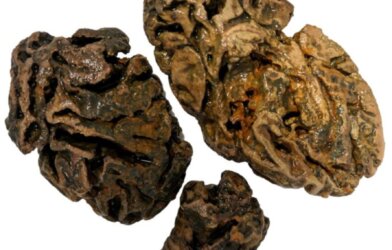Obsessive compulsive disorder affects approximately 3 million Americans. Both males and females are equally afflicted by this disorder and the number of people seeking treatment for OCD has increased drastically due to COVID-19. The stress of the pandemic can trigger or worsen the symptoms of OCD and current treatment options have disappointing outcomes for many as well as many negative side effects.
A new, non-invasive treatment option has been developed that could potentially treat OCD as well as other conditions such as gambling or shopping addictions by ‘zapping’ the brains of patients. Individuals who suffer from addiction have a slower functioning orbitofrontal cortex which is the target of the electrical treatment.
The jolt affects the neurons which in turn, affects the patient’s desire or compulsion for negative behaviors. Dr. Robert Reinhart, corresponding author of the study, sees the potential in the treatment for a multitude of compulsive disorders that are characterized by uncontrollable urges. “The results suggest it may be possible to non-invasively and electrically impede brain activity and behaviors that are undesirable to help people who are ‘stuck’ in a particular mode of functioning as is the case with obsessions and compulsions,” Reinhart says in a university release.
Reinhart’s team tested the therapy on 124 voluntary subjects with varying levels of obsessive compulsive disorder. The technique, called high-definition transcranial alternating current stimulation (HD-tACS,) is carried out through electrodes on the scalp of the patient. Tiny currents which are set at specific frequencies interact with and correct brainwaves.
After vie days of treatment, “it reduced obsessive-compulsive behaviors for up to three months — with the largest improvements seen in those with the most severe symptoms,” says Reinhart, per South West News Service. The results showed that both male and female subjects performed better in a series of self-control experiments after completing the therapy.
These promising results give us a preview into the possibility of this treatment on multiple conditions that cause uncontrollable urges which can be life-threatening, can lead to obesity, substance abuse or even financial ruin for individuals and their family. “Nearly one billion people worldwide suffer from obsessive-compulsive behaviors, yet our mechanistic understanding of them is incomplete, and effective therapeutics unavailable. They are highly prevalent in the general population and cause significant distress to the individual,” shared the authors of the study.
“This new form of personalized brain modulation may be effective in producing long-lasting benefits in people experiencing distress due to actions such as compulsive eating, gambling, and shopping.”
According to the study, interventions using non-invasive neuromodulation can be personalized based on the needs of the individual and his or her neurophysiological dynamics. “The personalized neuromodulation design leverages the neuroplastic properties of the brain to produce long-lasting effects via chronic HD-tACS administration. Although we examined a sub-clinical population in the present study, the benefits observed provide motivation for further investigation of personalized neuromodulation as an experimental medicine for clinical obsessive-compulsive spectrum disorders,” the study concludes.
The study is published in the journal Nature Medicine.













Comments